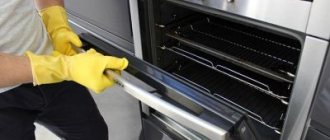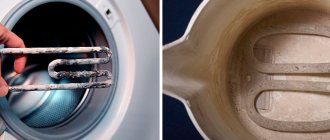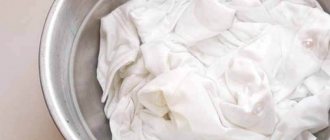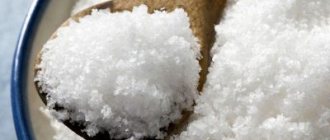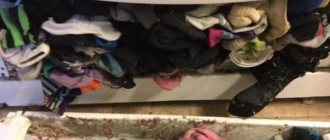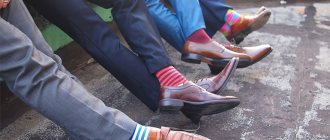Experienced housewives know how to keep things white, including using regular soda (baking or soda ash). When other available products fail, for example, when washing and bleaching children's socks, sodium carbonate/bicarbonate comes to the rescue.
Photo: Depositphotos.com. Author: Gudella.
Advantages of the method
Baking soda has its advantages over traditional bleaching agents:
- Does not contain fragrances or harmful chemicals. Therefore, it does not cause allergies and is ideal for washing children's clothes.
- This is a universal product that can be used for different materials.
- Availability and low cost.
- Perfectly complements washing powder.
- Helps protect washing machine parts from scale.
- It has a gentle effect on fabrics compared to classic bleaches.
- Is an excellent conditioner.
Features of caring for socks made of different materials
Like any clothing, socks can contain many components that, if not properly cared for, can quickly become unusable. Therefore, in order for terry socks or synthetic stockings not to lose their “marketable” appearance, you need to know how to properly care for them, depending on the type of material.
If the socks are made of cotton
Clothing made from natural cotton, bamboo or linen can withstand high temperatures well. This means that such products will withstand boiling and exposure to aggressive bleaches. That is, washing cotton socks is not difficult.
Methods of application
Handwash
- Dissolve 10 g of soda ash in 1 liter of water.
- Soak the socks in the prepared soda solution for 1 hour.
- Replace with regular, lukewarm water.
- Lather the items, sprinkle with baking soda and scrub vigorously with your hands or a special brush.
- Rinse several times.
- Squeeze and dry.
In the washing machine
- Prepare a mixture of 50 ml of vinegar and 100 g of sodium bicarbonate.
- Add the resulting mixture directly to the drum.
- Load up your socks.
- Turn on the normal cycle (for example, an hour wash at 60 °C).
Soak
The technique is well suited for socks with hard-to-wash stains (grass, food, etc.).
- Make a solution per 1 kg of things: 10 liters of water, 10 g of soda, 5 g of grated laundry soap (soap shavings).
- Place the laundry in the prepared water with soda for 3-4 hours.
- Rinse thoroughly under the tap or in a machine using the “Rinse + Spin” mode.
Boiling
Laundry boiled with soda is safe for children and people allergic to washing powders and bleaches. This is also a great way to disinfect socks for foot fungus.
Choose a deep container: a basin, a large enamel pan or a stainless steel bucket will do.
- Pour water into it (10 liters per 1 kg of laundry).
- Heat, dissolve 250 g of soda and grated laundry soap in water.
- Throw in socks and boil for 1-2 hours.
- Wait until it cools down and rinse in any convenient way.
Boiling
Once upon a time, boiling was almost the only way for housewives to clean light-colored clothes from stubborn dirt.
Currently, it is one of the methods that is resorted to in the most extreme cases. In order for boiling to give the desired result, you need to follow simple rules:
- Only cotton clothing items are allowed to be boiled.
- It is recommended to boil in enamel containers or stainless steel vessels.
- For every kilogram of things you will need about 10 liters of liquid.
- The detergent component must be thoroughly dissolved.
- The container should only be heated after loading laundry.
- Before boiling, it is advisable to soak in a similar solution to enhance the effect.
Useful lifehacks for washing
Tennis balls for machine
To effectively wash a large volume of clothes, load tennis balls into the drum with them. They are light and do not harm the machine. Due to additional mechanical action, they prevent the socks from sticking together.
Advice. You can buy special laundry balls at a hardware store. They help fight fungus and remove unpleasant odors from things.
Bags for delicate fabrics
Washing delicate items (silk, lace, fine cotton) requires careful handling.
For safe washing, place clothing in a cotton pillowcase or bag and tie it.
Modernization of washing powder
This life hack will help remove stubborn stains from white clothes.
Mix 2 liters of hot water, juice of 3 lemons, 1 tbsp. l. salt and ¼ cup of powder. After this, soak the items for 40 minutes and rinse thoroughly.
Removing paint from shoes
Dark shoe marks usually appear on snow-white products in two cases - if your feet are sweaty or if you have low-quality insoles. How to wash white socks from black soles if the stains are not old is a question that requires detailed consideration. You will need Domestos or any other product containing chlorine, for example, bleach. In equal parts you need to combine it with cool water, moisten a napkin or sponge in the solution, and then treat the dirt, after 30-40 minutes wash the socks in the usual way.
Any chlorine-containing compounds are allowed only for items made of 100 percent cotton.
To whiten wool or synthetic socks, you can use undiluted lemon juice. It needs to be applied to stains, left for 10-15 minutes, and washed. You can repeat the procedure until the black marks disappear. A concentrated solution of peroxide is also suitable - for one liter of water you will need two tablespoons of the product. Leave the socks in for 15 minutes, then wash them in warm water.
Domestos will help remove paint from shoes
Use lemon juice for whitening
Soda recipes for whitening socks
With ammonia
- Stir 6 tbsp in ½ liter of water. l. soda ash.
- Pour 2 tbsp into the solution. l. ammonia.
- Soak the laundry for 2 hours.
- Rinse the items in clean water and wash them in a convenient manner.
* For cotton and synthetic products.
With vinegar
Vinegar not only enhances the effect of soda, but also helps get rid of unpleasant odors.
- In a spray bottle, mix 1/3 cup of vinegar and 1/2 liter of water, add 1 tbsp. l. soda
- Spray the mixture onto the soiled fabric and leave to soak for 10 minutes.
- Rub with a special brush.
- Wash as usual: either by hand or in a machine.
* For synthetic fabrics.
With hydrogen peroxide
- In 2 liters of hot (but not boiling) water, dilute 1 tbsp. l. soda and the same amount of hydrogen peroxide.
- Soak the socks in the prepared solution for half an hour.
- Rinse clothes in running water.
* For washing children's cotton socks and flannel socks.
With vegetable oil
Vegetable oil does a great job of removing chewing gum marks and remnants of children's stickers.
- Boil 3 liters of water, add 2 tbsp. l. vegetable oil and 3 tbsp. l. soda
- Mix all ingredients and soak things overnight.
- Rinse and run one round in the washing machine with tennis balls.
* For synthetic and terry socks.
With soap
- Grate 100 g of laundry soap or plan with a knife.
- Add soap to a container with 1 liter of water and place on low heat.
- Stir constantly until the soap is completely dissolved, then add another 1 liter of water.
- Add 100 g of soda ash to the resulting mixture and mix again.
- Wait until the resulting gel thickens over low heat.
- Cool and pour into a convenient container.
* For synthetic fabrics, cotton and linen.
With salt
- Dissolve soda and salt in warm water per 1 liter of water - 1 tbsp. l. soda and salt.
- Leave the items to soak in this liquid for 1 hour.
- Rub in your hands or with a brush.
- Rinse thoroughly and dry.
* For light natural fabrics (chintz, linen).
With citric acid
- Grind 200 g of laundry soap into shavings.
- Add 500 g of baking soda, 2 tbsp. l. salt, 3 tbsp. l. citric acid, flavoring (optional).
- Dissolve the ingredients in 2 liters of water for hand washing or load them directly into the drum of the washing machine.
* Citric acid allows colored items to retain their brightness, so this recipe is suitable for all types of synthetic and cotton fabrics.
What you need to know
Whatever washing method you choose, be sure to follow these rules.
- Wash as often as possible . As soon as you take off your socks for the first time, put them in the dirty laundry basket. Then the dirt will not have time to eat into the fabric and it will be easier to wash it off.
- Don't put off washing . The longer the socks wait for the “bath procedures”, the more difficult it will be to wash them.
- Avoid bleach . It can thin out the fabric and cause your socks to deteriorate quickly. You need to be especially careful with bleach if there is appliqué, lace or other decor on your socks.
- Use laundry bags . If you are going to machine wash and are afraid that your socks will get damaged due to friction in the drum, put them in special bags - they will protect the fabric, but will not affect the quality of the process.
- Do not wash in hot water . This will only make sweat stains more noticeable. They will also be absorbed into the fabric so much that it will be very difficult to wash them off.
- Pay attention to the fabric . If the composition contains wool, socks should be washed at a temperature of no more than 35 degrees and they should not be rubbed too vigorously. But cotton socks can be washed even at 60 degrees (if they are not too dirty).
- Do not dry in bright sun . This may cause yellow streaks to appear on the fabric.
- Try not to wear white socks with black shoes . It may stain the fabric.
How not to spoil things
| Wear-safe ingredients | ||
| Cotton | Synthetic | Woolen |
|
|
|
Risk of discoloration. The fabric may become discolored due to the addition of hydrogen peroxide to the homemade detergent. To avoid this, you should strictly follow the proportions specified in the recipe, or completely abandon its use for washing colored items.
What tools to use
To clean white socks, stockings or tights, you can use both special products and improvised materials that are present in the arsenal of every housewife.
The first include such bleaches as the budget Bos Plus Maximum or the more expensive Astonish OXY PLUS. Laundry soap with a whitening effect copes well with stubborn stains.
If you don’t have a branded stain remover on hand, you can make your own at home. To do this you will need substances such as:
- lemon juice;
- boric acid;
- hydrogen peroxide;
- table vinegar;
- ammonia.
However, before choosing the appropriate composition, you will need to determine what material your product is made of. The washing method will directly depend on this.
Reviews from housewives
Svetlana. I believe that there is no better or safer product for health. An important nuance: you must wash with gloves. But this rule works for all bleaches and powders. In general, baking soda has proven its effectiveness to me more than once, so I very rarely buy store-bought stain removers.
Faith. I live in St. Petersburg, so I know about hard water firsthand. I read about soda ash on the Internet and decided to try it. The water has really become softer, and things can be washed in it the first time. I recommend!
Julia. I learned about all kinds of recipes with soda from my grandmother. Now not a single wash I do, whether by hand or in a machine, is complete without baking soda.
To ensure that white remains white, we care for it correctly.
Each of us thinks that he knows how to wash socks correctly, because they are most susceptible to contamination and, therefore, require frequent washing. But to care for white socks, it’s not enough to wash them every day. To ensure that this item always remains clean, there are some rules and tricks that make the process of caring for socks simple and cheap.
Among the recommendations listed below, you will learn how often to wash your socks, what to do to prevent pilling and yellow marks, what temperature to choose and what product will remove stains more effectively.
Store-bought bleaches with soda
| Name | Characteristics | Compound | price, rub. |
| "AntiPyatin" | White powder, completely soluble in water. Safe for washing baby clothes |
| 50–100 per 200 g |
| "Persol" | The powder is intended for colored and white fabrics. Contraindications: delicate silk. Softens water. Disinfects |
| 50–150 per 200 g |
| "Nanny" | Suitable for all types of fabrics. Works better on fresh stains |
| from 80 for 350 g |
| "Vanish" | Gently cleans fabrics even from old stains. Works in both hot and cool water |
| from 150 for 350 g |
| "Eared Nanny" | Powder for whitening children's clothes |
| from 130 for 300 g |
Try using soda ash to whiten your white socks and they will become as good as new.
How to whiten white sneakers with baking soda.
Secrets of soaking
Any items, including heavily soiled socks, can be treated better if they are pre-soaked. But this procedure is impossible without special means that fight not only bacteria, but also dirt.
When soaking socks, do not forget about sorting them, because some soaking methods require hot water, which is not desirable for woolen and synthetic products. After diluting the selected product with warm water, place the socks in the solution to enhance the effect for 2-3 hours.
So…
On one of the forums I came across an interesting opinion about the family budget and washing white socks. Washing snow-white linen takes a lot of money, which is not always cost-effective. We cannot but agree with this review.
And therefore...
Minimize the risk of wearing white socks by purchasing a pair to match your shoe color. Stock up on socks for future use so you can change them daily. Wear shoes appropriate for the season to prevent your feet from sweating—unstable paint fades easily in a humid, warm environment. After washing sports shoes, dry them thoroughly.
Can't resist wearing white socks with bright sneakers? At the very least, put in a white insole (some resourceful girls glue sanitary pads inside) and use the recipes from the section of the article on how to “wean” your shoes from staining your socks and feet.
If you follow these simple rules, your socks will always remain snow-white.
Share useful information with your friends:
Why white socks get dirty quickly: the main reasons
White socks are in direct contact with the floors, so questions about why they quickly get dirty and dirty usually do not arise. However, even if you mop and vacuum your floors every day, your socks can still quickly turn gray and look less neat.
The following reasons may contribute to their rapid contamination
Dirty insole and inner walls of shoes. Especially new shoes often leave dark marks on the toes.- Increased sweating of the feet. Then the white socks will become dirty inside and out, even if you haven't worn them anywhere. In addition to changing the shade of the material, it also absorbs the unpleasant odor of sweat.
- Stains and dirt. Mechanical dirt also often remains on socks and is difficult to wash off, since they are quickly absorbed into the fibers of the fabric while walking.
The reason why your white socks quickly get dirty depends not only on how to clean them, but also on preventative measures that will help keep them in their original condition longer and avoid changes in shade.
